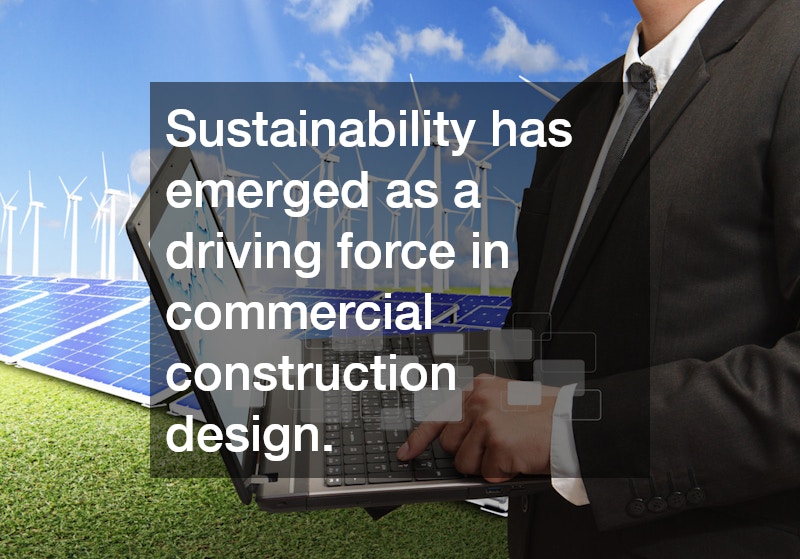The commercial construction industry is undergoing a transformative phase, driven by a mix of technological advancements, sustainability initiatives, economic factors, and labor market dynamics. These aspects not only influence the design and execution of construction projects but also shape the future of the industry as a whole. With commercial construction companies in Denver, CO, leading the charge in innovation and sustainability, understanding these trends is crucial for stakeholders within the industry. This article explores the latest advancements and challenges within commercial construction and how they correlate to a broader economic environment.
What are the latest technological advancements in commercial construction?
Innovations such as Building Information Modeling (BIM), drones, and 3D printing have allowed construction companies to visualize and manage projects more effectively. BIM, for instance, aids in generating highly detailed design models that can help detect issues before physical construction begins. Drones are increasingly being utilized for site inspections and surveys, significantly reducing time and enhancing safety. With the emergence of smart buildings, Internet of Things (IoT) technologies are being employed to optimize energy management and improve building performance.
Moreover, these technological advancements streamline collaboration among various stakeholders involved in commercial construction projects. Construction management software allows real-time communication between architects, engineers, and contractors, reducing misunderstandings and errors that may lead to costly delays. These tools foster transparency in project management, enabling stakeholders to track budgets, schedules, and materials throughout the construction phase. With the adoption of augmented reality (AR), construction professionals can visualize finished projects, making on-site adjustments easier and more accurate.
How is sustainability influencing commercial construction design?
Sustainability has emerged as a driving force in commercial construction design, shaping how structures are conceptualized and built. Green building practices are increasing in importance, with a focus on energy efficiency, resource conservation, and minimal environmental impact. Many commercial construction companies in Denver, CO, are adopting sustainable materials and practices to meet regulatory requirements and cater to an environmentally conscious clientele. This trend includes using renewable energy sources, such as solar panels, and implementing energy-efficient systems that reduce overall operational costs.
The principles of sustainable design are not limited to materials; they also emphasize the health and wellbeing of occupants. Designers and architects are increasingly considering indoor air quality, natural light, and acoustics in their plans to create more comfortable and productive environments. With certifications like LEED (Leadership in Energy and Environmental Design) gaining traction, properties that meet these rigorous standards often see increased marketability and higher lease rates. Beyond compliance, sustainable design is viewed as an investment, often yielding returns through lower utility bills and fewer maintenance issues in the long run.
What are the major challenges facing the commercial construction industry?
The commercial construction industry faces numerous challenges that can impact project completion and cost-effectiveness. One of the most pressing issues is the increasing complexity of regulations and compliance requirements. As government oversight tightens in response to safety and environmental concerns, construction companies must adapt to a labyrinth of local, state, and federal regulations. This can lead to delays and increased costs as companies strive to meet these standards while managing project timelines.
Additionally, supply chain disruptions have become a significant impediment to commercial construction. The COVID-19 pandemic exposed vulnerabilities in global supply chains, leading to material shortages and increased costs. As a result, construction companies often find themselves scrambling to secure essential materials on time, which can disrupt project schedules and inflate budgets. The challenge is compounded by the rising costs of raw materials and labor, creating a precarious financial landscape for many contractors working on tight margins.
How is the labor market affecting commercial construction projects?
The labor market plays a crucial role in the commercial construction sector, impacting project timelines, costs, and overall quality of work. A shortage of skilled labor has intensified competition among companies, leading to higher wages that can strain budgets. Many commercial construction companies in Denver, CO, report difficulty in securing qualified workers, which has prompted them to reevaluate hiring and training strategies. As the demand for new construction grows, this labor gap may pose challenges in meeting deadlines and fulfilling contracts as competition for a limited workforce increases.
The situation is exacerbated by an aging workforce, with many experienced tradespeople nearing retirement age. This demographic shift means that a wealth of knowledge and skills is being lost, further widening the skill gap in the industry. To combat this issue, construction companies must actively engage in developing training programs and partnerships with local trade schools and organizations. Promoting careers in construction to younger generations is essential not only for filling current vacancies but also for securing the industry’s future viability.
In conclusion, the commercial construction industry is experiencing profound changes driven by technological advancements, sustainability demands, labor market challenges, and various economic factors. Companies must remain agile and adaptive as they navigate these complex landscapes while prioritizing efficiency and quality. The involvement of commercial construction companies in Denver, CO, demonstrates the industry’s potential to embrace innovation and sustainability, ensuring its resilience for the future.
.



